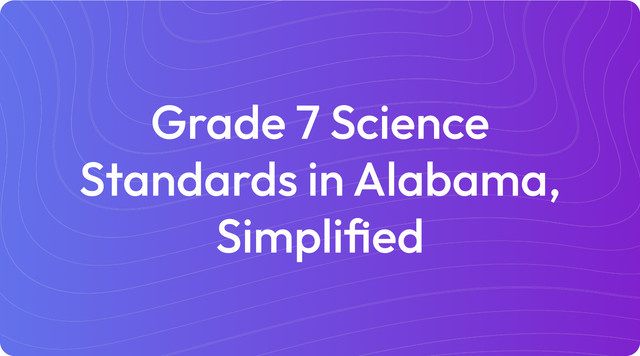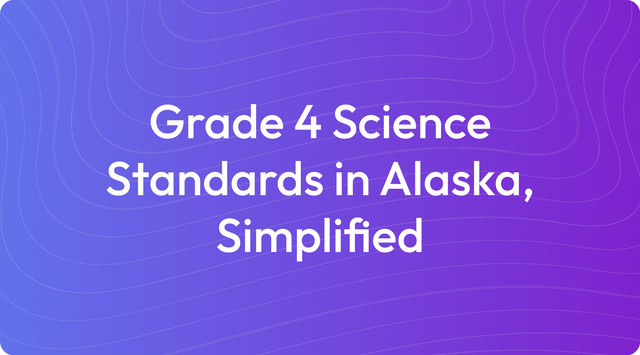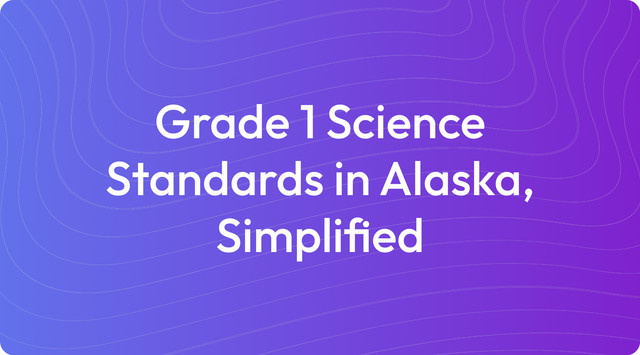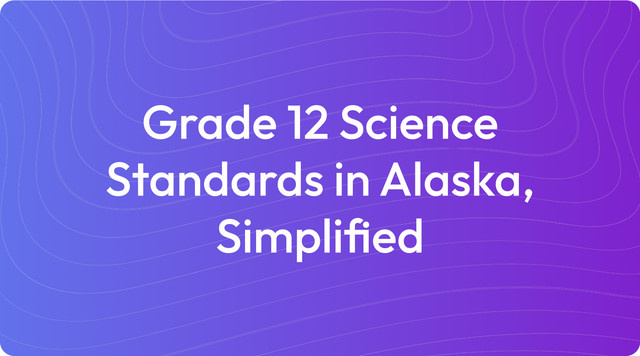Grade 4 Science Standards in Alabama, Simplified
Grade 4 science in Alabama includes energy, waves, ecosystems, and Earth's changes. For a simple guide, read more on TeachShare!
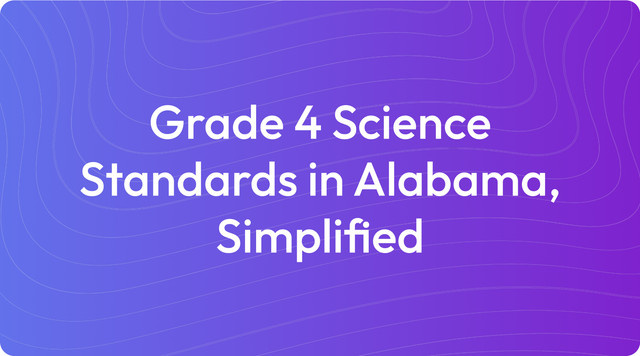
We understand that working with state standards can be a detailed process. Our goal is to offer clear, practical resources that help you plan your curriculum and design lessons. This guide breaks down the Grade 4 Science Standards for Alabama to support your work in the classroom.
Education standards are learning goals that outline what students are expected to know by the end of a grade level. For teachers, they serve as benchmarks for student progress without prescribing specific teaching methods or materials. For instance, Alabama's fourth-grade science standards require students to develop models of energy flow, which gives you the flexibility to create your own food web activities to meet that objective.
What Are Grade 4 Science Standards in Alabama?
The Grade 4 Science Standards for Alabama, based on the 2015 Course of Study, are built to give students a deeper understanding of science through hands-on work and critical thinking. They are designed to develop scientific reasoning and problem-solving skills that connect to real-world applications.
The standards are organized into the following key areas and learning goals:
Key Areas of Grade 4 Science Standards in Alabama
1. Life Science (LS): Energy Flow and Ecosystems
Develop models to describe the movement of energy through food chains, food webs, and energy pyramids.
Investigate how organisms depend on each other and their environment, including the roles of producers, consumers, and decomposers.
2. Physical Science (PS): Energy, Motion, and Electricity
Plan and conduct investigations to determine the effect of force on the motion of an object.
Explore and explain the relationship between energy and motion by observing energy transfers (e.g., sound, heat, light, and mechanical energy).
Design and test a complete circuit to demonstrate the flow of electricity.
3. Earth and Space Science (ESS): Earth's Processes and Resources
Collect and analyze data to identify patterns in the occurrence of natural hazards (e.g., earthquakes, tsunamis, volcanic eruptions).
Describe the layers of Earth's interior and how they contribute to natural processes such as volcanic eruptions and earthquakes.
Investigate how natural resources are used and how human activities impact Earth’s systems.
4. Engineering, Technology, and Applications of Science (ETS): Problem-Solving
Design and test solutions to limit the effects of natural Earth processes (e.g., building earthquake-resistant structures or flood barriers).
Key Learning Goals for Grade 4 Science in Alabama
Observation and Data Analysis: Students collect, analyze, and interpret data to identify patterns in energy, motion, and natural processes.
Model Building: Students develop models to explain scientific phenomena like energy flow in ecosystems or Earth’s layers.
Problem-Solving: Students engage in engineering challenges to design solutions for real-world problems, like managing natural hazards or conserving resources.
The framework for these standards is guided by the Alabama State Department of Education and the Next Generation Science Standards.
Key Tested Standards
The key tested standards for Grade 4 Science in Alabama, based on the Alabama Course of Study: Science (2015), highlight critical concepts across Life Science, Physical Science, Earth and Space Science, and Engineering Design. These standards focus on students’ ability to observe, investigate, analyze data, and solve real-world problems. Below are the key tested standards for Grade 4 Science:
Key Tested Standards for Grade 4 Science in Alabama
1. Life Science (LS): Energy Flow and Ecosystems
Standard 1: Develop models to describe the movement of energy through food chains, food webs, and energy pyramids.
Why It’s Key: This standard helps students understand how energy flows through ecosystems and the roles of producers, consumers, and decomposers.
Standard 2: Investigate how organisms depend on each other and their environment, including the roles of producers, consumers, and decomposers.
Why It’s Key: This standard emphasizes the interdependence of organisms and how changes in ecosystems affect their balance.
2. Physical Science (PS): Energy, Motion, and Electricity
Standard 3: Plan and conduct investigations to determine the effect of force on the motion of an object.
Why It’s Key: This standard introduces foundational physics concepts, such as force, motion, and cause-and-effect relationships.
Standard 4: Explore and explain the relationship between energy and motion by observing energy transfers (e.g., sound, heat, light, and mechanical energy).
Why It’s Key: This standard builds students’ understanding of how energy moves and changes form in real-world scenarios.
Standard 5: Design and test a complete circuit to demonstrate the flow of electricity.
Why It’s Key: This standard introduces students to the basics of electricity and allows them to explore how circuits work.
3. Earth and Space Science (ESS): Earth's Processes and Resources
Standard 6: Collect and analyze data to identify patterns in the occurrence of natural hazards (e.g., earthquakes, tsunamis, volcanic eruptions).
Why It’s Key: This standard connects students to real-world phenomena, helping them understand natural hazards and their patterns.
Standard 7: Describe the layers of Earth’s interior and how they contribute to natural processes such as volcanic eruptions and earthquakes.
Why It’s Key: This standard helps students explore Earth’s structure and how it impacts natural events on the surface.
Standard 8: Investigate how natural resources are used and how human activities impact Earth’s systems.
Why It’s Key: This standard encourages students to think critically about resource use and environmental conservation.
4. Engineering, Technology, and Applications of Science (ETS): Problem-Solving
Standard 9: Design and test solutions to limit the effects of natural Earth processes (e.g., building earthquake-resistant structures or flood barriers).
Why It’s Key: This standard combines science and engineering by challenging students to solve real-world problems related to natural hazards.
Why These Standards Are Key for Testing:
These standards assess students’ ability to:
Analyze Data and Identify Patterns: For example, tracking natural hazards or observing forces and motion
Develop and Use Models: For example, modeling energy flow in food webs or Earth’s layers
Design and Evaluate Solutions: For example, creating flood barriers or earthquake-resistant structures to reduce the impact of natural processes
Explain Scientific Phenomena: For example, explaining how energy transfers or how ecosystems maintain their balance
Sources: Alabama State Department of Education, Next Generation Science Standards.
Example Learning Objectives for Unit Planning
Learning objectives are clear, specific statements that describe what students should be able to do by the end of a lesson. They help guide instruction and make it easier to measure progress. To help you plan your units, here are some sample learning objectives for two key Grade 4 Science standards, written in student-friendly language:
Standard: Develop models to describe the movement of energy through food chains, food webs, and energy pyramids (Standard 1).
Learning Objectives:
I can explain how energy moves through a food chain, starting with the Sun and going to plants and animals.
I can create a food web that shows how plants, animals, and decomposers are connected in an ecosystem.
I can describe the role of producers, consumers, and decomposers in a food chain.
I can use a diagram or model to show how energy levels decrease as it moves up the energy pyramid.
Standard: Design and test a complete circuit to demonstrate the flow of electricity (Standard 5).
Learning Objectives:
I can describe how electricity flows in a complete circuit.
I can identify the parts of a circuit, including wires, batteries, and bulbs.
I can build a circuit and test if it works by making a light bulb glow.
I can explain why a circuit does not work if it is incomplete or has a broken connection.
Key Changes & Updates
The 2015 Alabama Course of Study for Science introduced updates for Grade 4 that reflect a shift toward more hands-on, practical learning. The standards now place a greater focus on inquiry-based activities where students actively participate in investigations, experiments, and model-building. This change anchors lessons in real-world scenarios, such as studying the effects of natural hazards or designing structures to solve a problem, making science more relevant and concrete for your students.
These updates also emphasize the development of critical thinking and analytical skills. Students are encouraged to see the interconnectedness of systems, from ecosystems to the layers of the Earth. A key component is learning to use evidence from collected data to construct scientific explanations. This approach creates natural opportunities for cross-disciplinary connections with math for data analysis and literacy for communicating findings, supporting a well-rounded educational experience.
Create with TeachShare
We understand that translating these standards into effective classroom activities is a significant task. Our goal is to support you by making resource creation simpler and faster. With our tools, you can build lessons that are not only aligned with Alabama's science standards but also tailored to your students' needs. Start creating standards-aligned instructional resources with TeachShare now.
Frequently Asked Questions
What are the main topics covered in Grade 4 Science in Alabama?
The fourth-grade science curriculum is built around four key areas of study. Here is a look at what your students will explore:
- Life Science: This includes the flow of energy through ecosystems with food chains and food webs, as well as the roles of producers, consumers, and decomposers.
- Physical Science: Students investigate the effects of forces on motion, different types of energy transfers, and the fundamentals of electricity and circuits.
- Earth and Space Science: This area covers natural hazards like earthquakes and volcanoes, the structure of Earth’s layers, and the impact of human activity on natural resources.
- Engineering Design: Students apply their knowledge to design solutions that can lessen the impact of natural events, such as building flood barriers.
How are the 2015 standards different from previous ones?
The Alabama Course of Study for Science (2015) represents a shift toward more active and applied learning. The goal is to help students think and act like scientists and engineers. Here are the main differences:
- Hands-On Learning: There is a strong focus on conducting investigations and building models to understand concepts directly.
- Real-World Applications: Lessons are designed to connect with everyday life, from understanding local hazards to solving environmental problems.
- Engineering Integration: Students are asked to design, test, and improve solutions to practical challenges.
- Critical Thinking: The standards encourage students to analyze data, find patterns, and build explanations based on evidence.
What are some examples of activities that align with the standards?
You can bring these standards to life with engaging, hands-on projects. Here are a few examples of activities for your classroom:
- Energy Flow: Have students create their own food chain and food web diagrams to illustrate how energy moves through an ecosystem.
- Forces and Motion: Use toy cars and ramps to let students experiment with how pushes and pulls change an object's motion.
- Electric Circuits: Provide batteries, wires, and bulbs for students to build simple circuits and see electricity in action.
- Natural Hazards: Challenge students to design and test model structures, like earthquake-resistant buildings, to see how they hold up against simulated disasters.
How do these standards connect to real life?
These standards are designed to help students understand the science shaping their world and community. They show students how science is relevant outside the classroom by exploring:
- The balance of nature within local ecosystems.
- The physics of forces and energy in daily activities, like using simple machines.
- The ways natural events like floods affect communities and how engineering can help.
- The importance of conserving natural resources and how human actions have an impact.
Why is engineering included in Grade 4 Science?
Including engineering in the science curriculum helps students develop practical skills and a problem-solving mindset. It is included for several key reasons:
- It teaches students to apply scientific ideas to solve real-world problems.
- It fosters creativity and critical thinking as students design, test, and refine their ideas.
- It demonstrates how science and engineering work together to address important challenges, from protecting against natural hazards to conserving resources.
Answer


